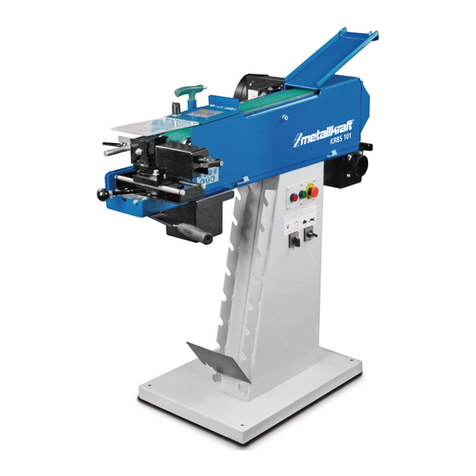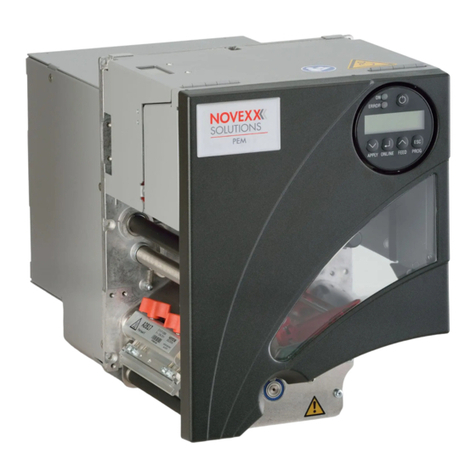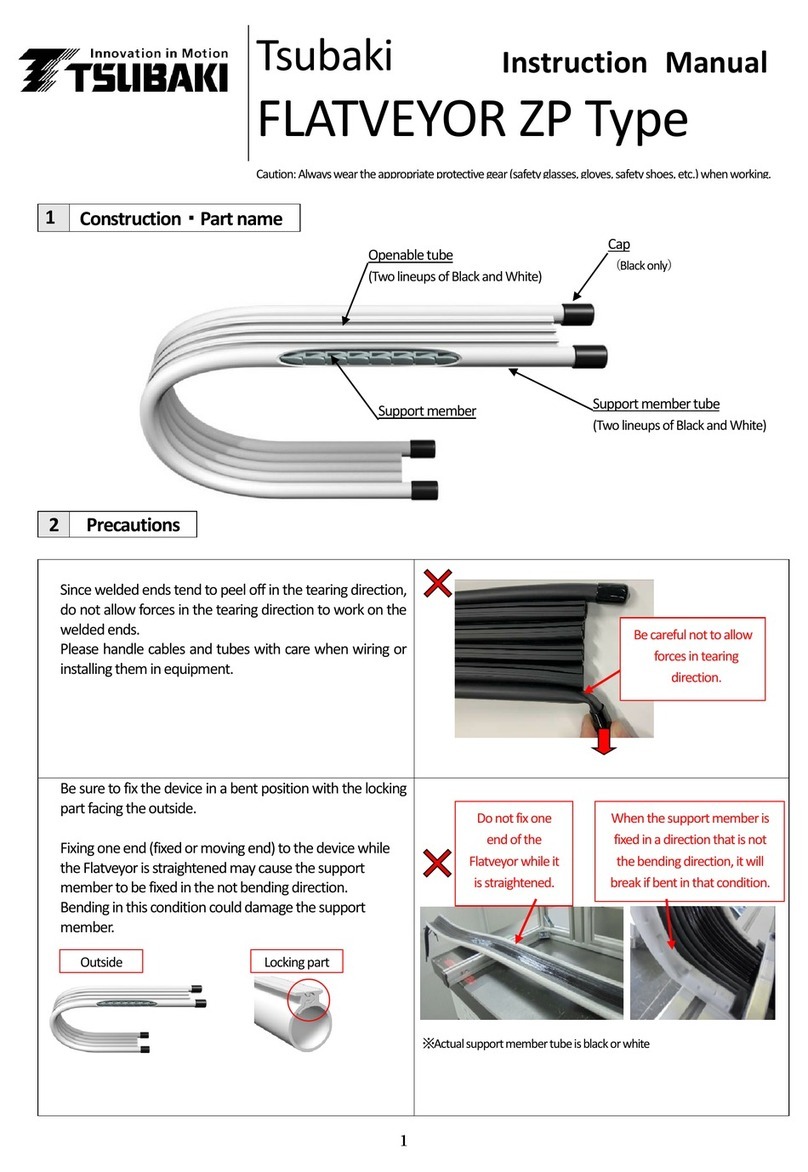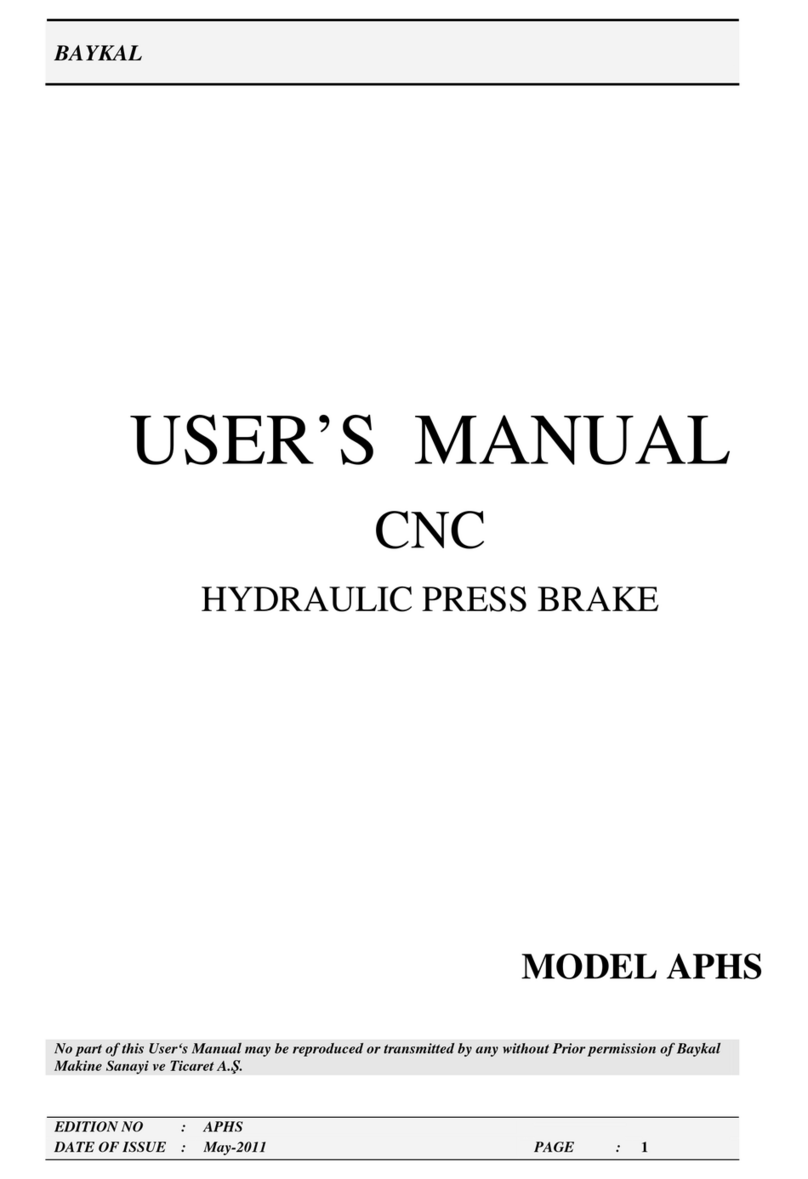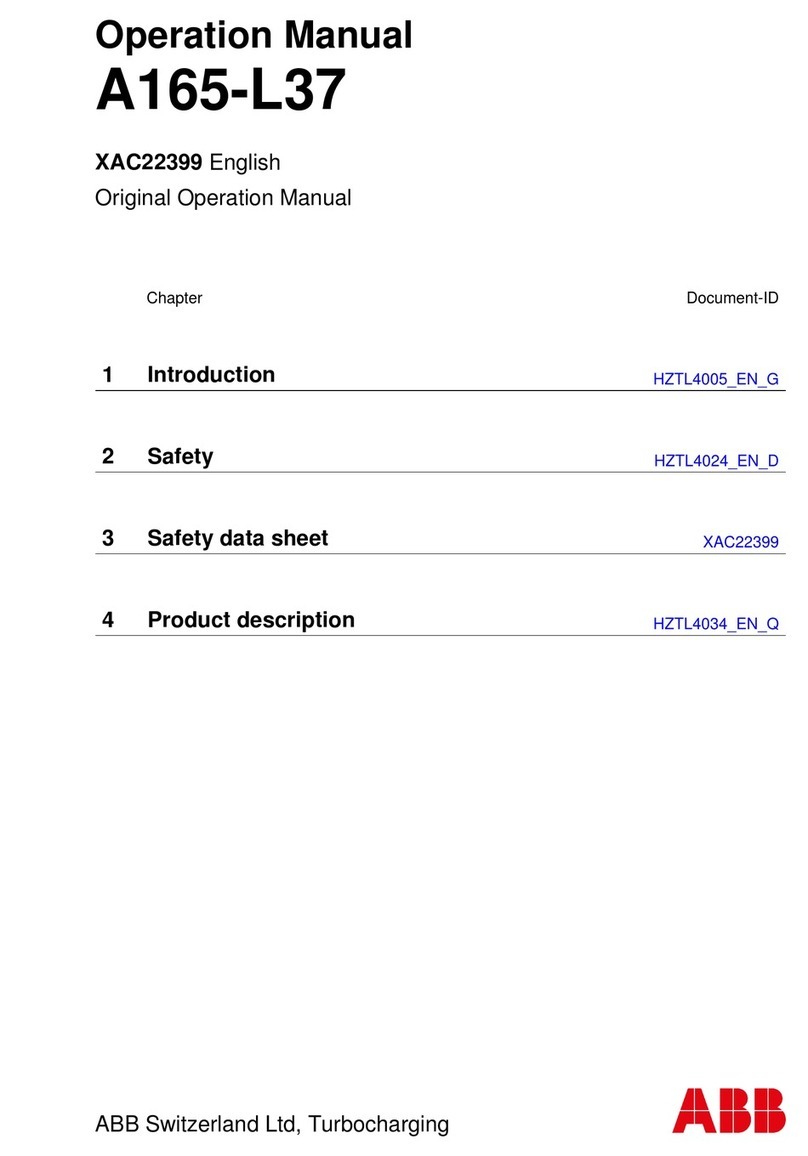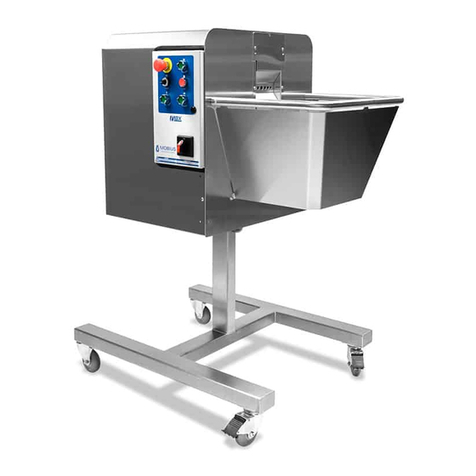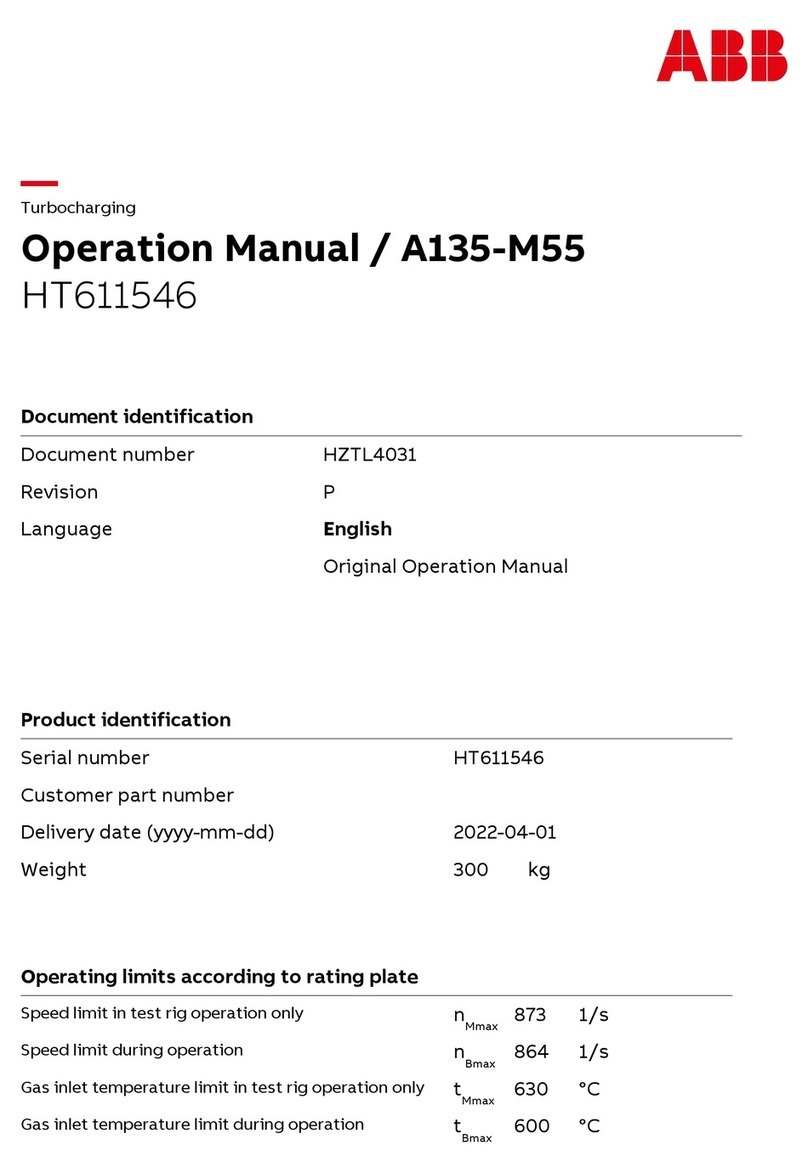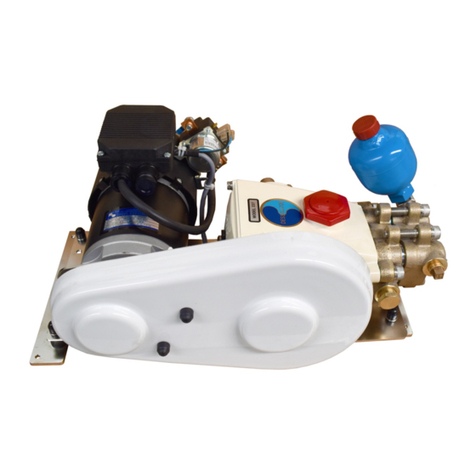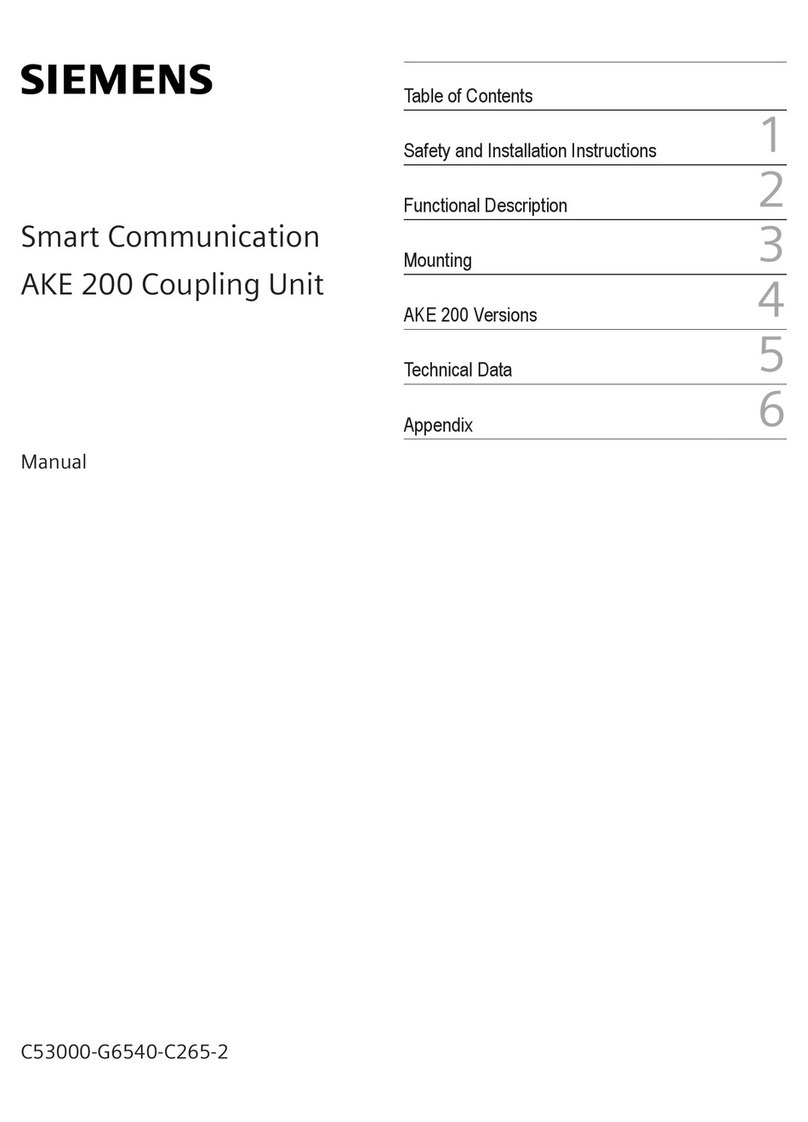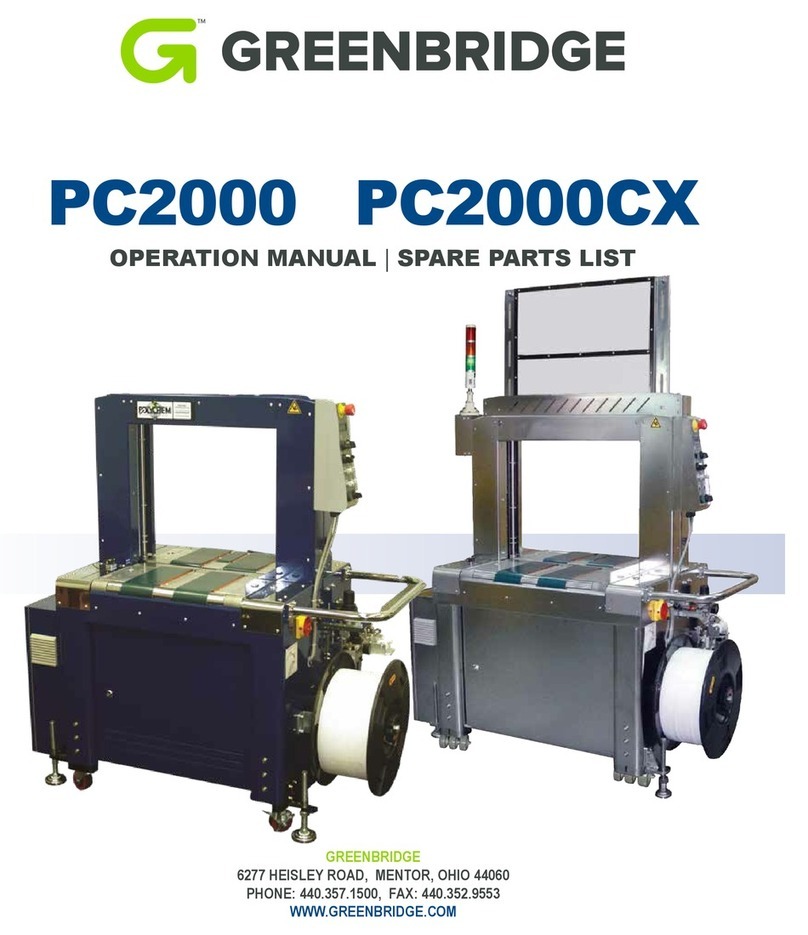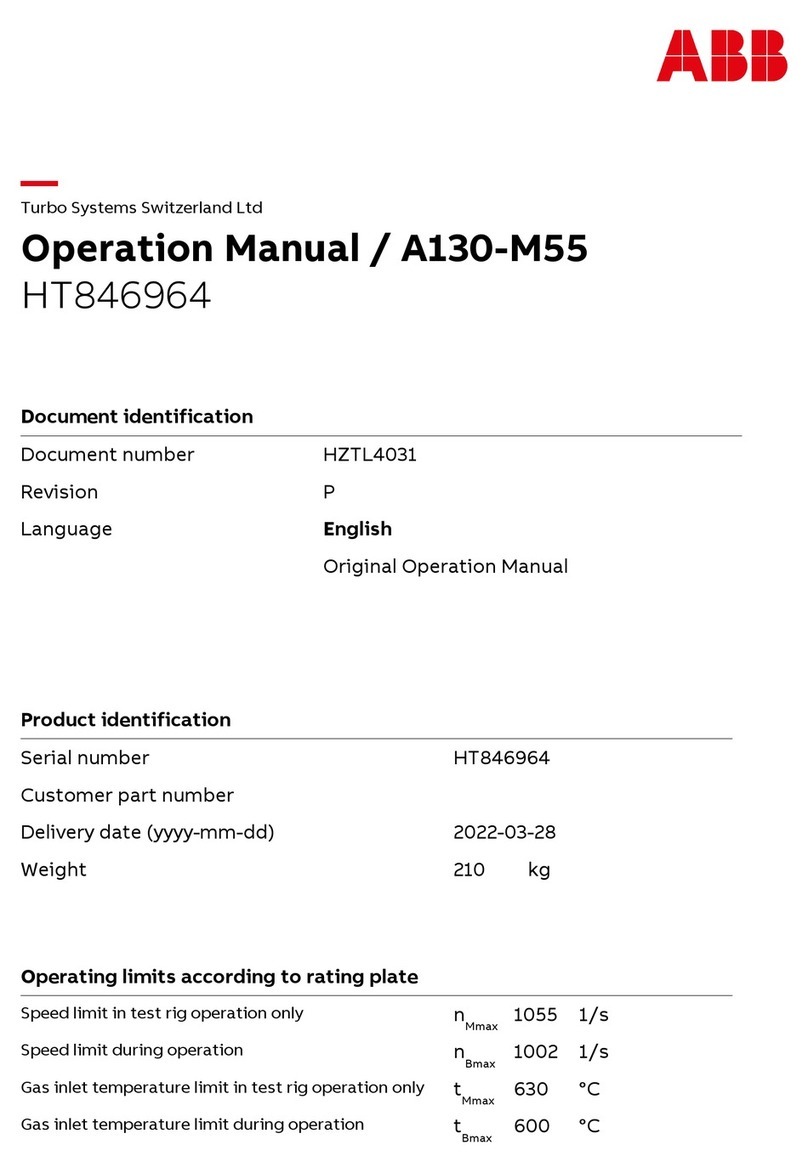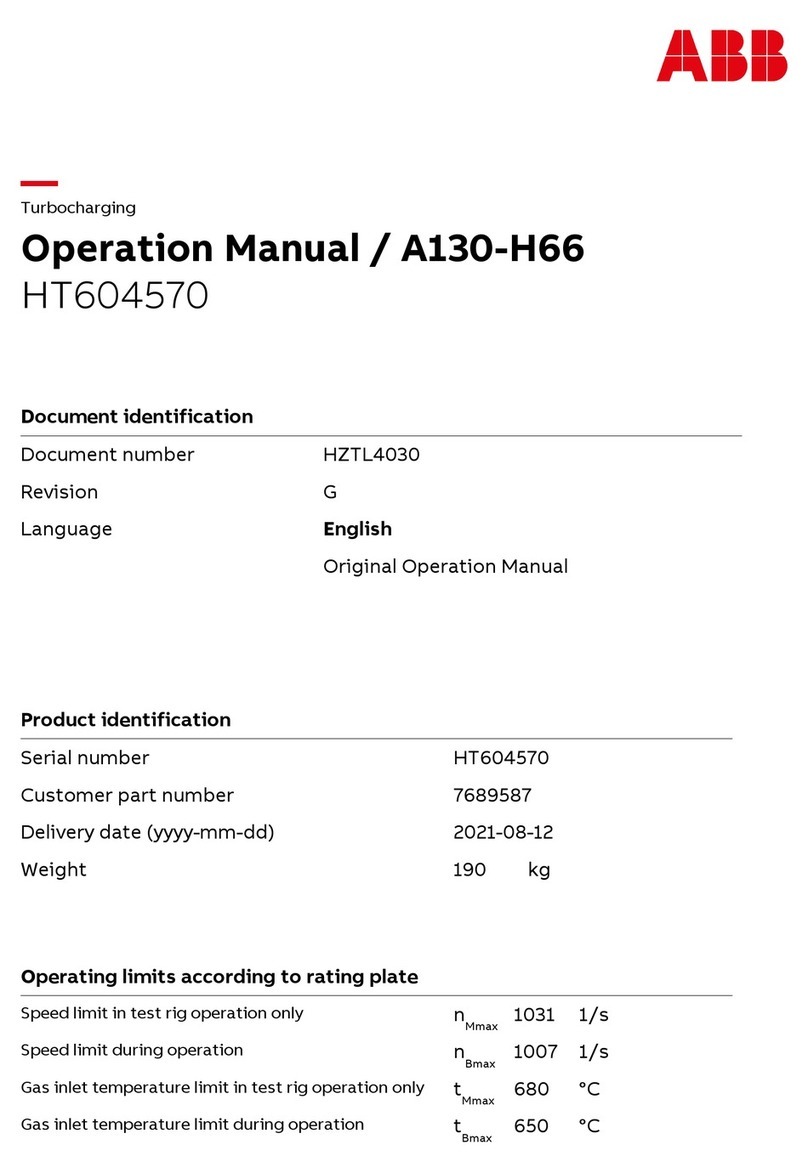SODICK A320D User manual

Wire EDM Machine Operation Table Of Contents
Copyright June, 98 Sodick Inc.
TABLE OF CONTENTS
INTRODUCTION I
DESCRIPTION OF THIS MANUAL II
ORIGIN OF THE NAME “SODICK” III
COMPANY PROFILE IV
CHAPTER 1 DESCRIPTION OF THE EDM PROCESS 1-1
GENERAL EDM FACTORS 1-1
WIRE DIAMETER AND WIRE GUIDES 1-1
WIRE TYPE 1-2
RECOMMENDED WIRES 1-2
HARD BRASS WIRE 1-2
FLUSHING 1-3
WIRE SPEED 1-3
WIRE TENSION 1-4
WATER RESISTIVITY 1-4
WORKPIECE MATERIAL AND HARDNESS 1-5
SPECIFIC PARAMETERS OF THE EDM PROCESS 1-5
OSCILLOSCOPE DISPLAY OF 3 DISCHARGE PULSES 1-6
ON 1-6
OFF 1-7
MA 1-7
HP 1-8
IP 1-8
V1-9
SV 1-9
SF 1-10
C1-10
WT 1-11
WS 1-11
WP – WC 1-11
UNDERSTANDING THE CONDITION FILE MANUAL 1-11
SURFACE FINISH EXPECTED 1-12
MORE ON THE EDM PROCESS 1-12
OTHER GENERAL TIPS ABOUT WIRE EDM 1-13
START FROM A START HOLE AND RUN IN SUBMERGE MODE .1-13
CHECK FOR WIRE VERTICAL ALIGNMENT OFTEN.1-13
MAKING PUNCHES AND DIES FIT.1-13
CHAPTER 2 MACHINE LAYOUT DESCRIPTION 2-1
MACHINE:2-2
DIELECTRIC SYSTEM:2-2
CONTROL:2-2
CONTROL SCREEN (CRT) RELATED KEYS:2-2
KEYBOARD RELATED BUTTONS:2-3

Wire EDM Machine Operation Table Of Contents
Copyright June, 98 Sodick Inc.
PROGRAM ACTIVATION KEYS (NC SIDE ONLY)2-4
MACHINE RELATED SWITCHES (SWITCH SUB PANEL): 2-5
AWT RELATED SWITCHES 2-5
LAMPS 2-6
AMP - VOLTMETERS 2-7
AMP METER 2-7
ADDITIONAL SWITCHES 2-7
ARROW UP – DOWN SWITCH 2-7
E STOP BUTTON 2-7
HOUR METER 2-7
CHAPTER 3 PROGRAM ZERO DESCRIPTION 3-1
HOW TO ASSIGN YOUR PROGRAM ZERO POINT:3-3
UNDERSTANDING WORK COORDINATE SCREENS 3-4
CHAPTER 4 PROGRAM MAKEUP 4-1
PREPARATION FOR PROGRAMMING 4-3
1) DO ALL NECESSARY MATH:4-3
2) DECIDE UPON THE WIRE DIAMETER 4-4
3) CHECK THE CONDITION FILE MANUAL FOR THE NECESSARY CONDITIONS AND OFFSETS 4-5
4) CONSIDER THE BEST START POINT 4-5
CHAPTER 5 THE FOUR KINDS OF WIRE MOTION 5-1
G00 RAPID MOTION (NO CUTTING)5-1
G01 - STRAIGHT LINE MOTION (ACTUALLY CUTTING)5-2
G02 AND G03 - CIRCULAR MOTION 5-3
SPECIFYING THE X AND Y VALUES IN A CIRCULAR MOVE 5-3
SPECIFYING THE RADIUS IN A CIRCULAR MOVE WITH I AND J5-3
CIRCULAR MOTION USING THE R WORD ( CONSTANT RADIUS)5-5
TAPER CUTTING CONSIDERATIONS WHEN CUTTING AN ARC:5-5
EXAMPLE PROGRAM SHOWING THREE MOTION TYPES G00, G01, G03 5-6
CHAPTER 6 DESCRIPTION OF PROGRAMMING CODES AND WORDS 6-1
LIST OF G CODES 6-4
LIST OF T CODES 6-5
LIST OF M CODES 6-6
M CODE DESCRIPTIONS 6-6
ADDITIONAL INFORMATION FOR POST PROCESSOR CREATION 6-7
NC PROGRAM EXAMPLES 6-8
PROGRAM EXAMPLE 16-8
PROGRAM EXAMPLE 26-9
CHAPTER 7 WIRE OFFSET DESCRIPTION 7-1

Wire EDM Machine Operation Table Of Contents
Copyright June, 98 Sodick Inc.
UNDERSTANDING OFFSETS 7-1
THREE ADVANTAGES TO USING OFFSETS 7-1
OFFSET PROGRAMMING 7-1
INITIALIZING OFFSET 7-2
OFFSET VALUE 7-3
CANCELING WIRE RADIUS COMPENSATION 7-3
“APPROACH PATTERN” PARAMETER 7-3
IMPORTANCE OF TEST SQUARES 7-5
TEST CUTTING TO CONFIRM OFFSETS 7-5
INCORPORATING DIE CLEARANCE WITH OFFSETS 7-6
WHEN CLEARANCE IS LARGER THAN THE OFFSET VALUE 7-6
USING A “HEADER” IN THE NC FILE 7-7
ENTERING VALUES FOR THE H CODES OF NEWFILE 7-7
SETTING NEGATIVE OFFSET VALUES DIRECTLY 7-8
ALTERNATE METHOD OF DEFINING OFFSET VALUES 7-9
CHAPTER 8 TAPER CUTTING INFORMATION 8-1
TAPER CUTTING CONSIDERATIONS:8-1
TAPERING TO THE TOP OF THE DIE (NO DIE LAND)8-2
MACHINING A DIE WITH A LAND 8-2
HOW TO PROGRAM TAPER 8-3
INITIALIZING TAPER 8-4
EXAMPLE OF HOW TO PROGRAM TAPER CORRECTLY:8-5
TAPER SETTINGS IN THE CONTROL 8-7
TABLE TO LIMIT 8-7
TABLE TO UPPER 8-8
TABLE TO LOWER GUIDE 8-8
TABLE TO PROGRAM 8-9
TABLE TO NEXT 8-9
TABLE TO DRAW 8-10
NOTES ABOUT DRY RUN 8-10
PARTIAL DRY RUN 8-10
DRY RUN SPEED 8-10
DRY RUN AND LIMIT SWITCHES 8-10
TAPER SETTING EXAMPLES 8-12
TAPER SETTINGS IN BRIEF – OPERATOR INPUT 8-13
MANUAL Z AXIS MACHINES 8-13
POWER Z AXIS MACHINES 8-13
TAPER SETTINGS IN BRIEF FOR 4 AXIS CUTTING (G74-G141) 8-13
MANUAL Z AXIS MACHINES 8-13
POWER Z AXIS MACHINES 8-13
NOTES CONCERNING TAPER CUTTING 8-14
FLUSH NOZZLES 8-14
WIRE TYPE CONSIDERATIONS 8-14
CONVERTING TO DECIMAL DEGREES 8-14
GRAPHICS COLORS 8-14
CHAPTER 9 PROGRAM FORMATTING 9-1

Wire EDM Machine Operation Table Of Contents
Copyright June, 98 Sodick Inc.
PUNCHES 9-1
DIES 9-2
FORM TOOLS 9-3
WORDS INVOLVED IN SUBROUTINES 9-3
SUBROUTINES INVOLVE FOUR PROGRAMMING WORDS:9-3
PUNCH EXAMPLE 9-4
DIE EXAMPLE 9-6
CHAPTER 10 DESCRIPTION OF OPERATING AIDS 10-1
Q ROUTINE TECHNIQUES (MACROS)10-1
WHAT IS A Q ROUTINE?10-1
MACHINE START-UP Q ROUTINE 10-2
VARIABLES IN Q ROUTINES 10-2
ARITHMETIC IN A Q ROUTINE 10-4
OVAL SHAPED DIE BUTTON EXAMPLE 10-5
G AND M CODES FOR Q ROUTINES 10-7
G83 - Transfer Current Position Into H Register 10-7
COORDINATE SYSTEM SHIFTING (G54-G959) 10-8
EASILY PROGRAMMING MULTIPLE DIE OPENINGS 10-8
USING A COORDINATE SYSTEM TO KEEP TRACK OF THE MACHINE’S POSITION 10-9
USING COORDINATE SYSTEM SHIFTING TO COMPARE MEASUREMENTS 10-10
MIRROR IMAGE AND AXIS EXCHANGE 10-10
SUBROUTINE TECHNIQUES 10-13
SCALING 10-13
AUTOMATIC CORNER ROUNDING 10-14
USING AUTOMATIC CORNER ROUNDING “R WORD” 10-14
AXIS ROTATION 10-16
STRING FILE 10-16
EXAMPLE OF STRING FILE 10-17
CHAPTER 11 PRACTICE EXERCISES 11-1
PRACTICE EXERCISES CHAPTER ONE 11-1
PRACTICE EXERCISES CHAPTER TWO 11-4
PRACTICE EXERCISES CHAPTER THREE 11-5
PRACTICE EXERCISES CHAPTER FOUR 11-7
PRACTICE EXERCISES CHAPTER FIVE 11-8
PRACTICE EXERCISES CHAPTER SIX 11-10
PRACTICE EXERCISES CHAPTER SEVEN 11-11
PRACTICE EXERCISES CHAPTER EIGHT 11-14
PRACTICE EXERCISES CHAPTER NINE 11-15
CHAPTER 12 MAINTENANCE 12-1
DISPLAY MAINTENANCE SCREEN 12-1
MAINTENANCE CHECKLIST 12-2
BY THE HOUR CHECKS 12-2

Wire EDM Machine Operation Table Of Contents
Copyright June, 98 Sodick Inc.
DAILY CHECKS 12-2
WEEKLY CHECKS 12-2
BI-WEEKLY 12-2
MONTHLY 12-2
QUARTERLY 12-2
ANNUALLY 12-3
MAINTENANCE DESCRIPTIONS 12-3
RESISTIVITY METER 12-3
DI BOTTLE: 12-3
WORKTANK AND TABLE: 12-4
WATER FILTERS: 12-4
CARBIDE POWER CONTACTS: 12-4
FLUSH NOZZLES: 12-5
WIRE GUIDES: 12-5
LOWER WIRE ROLLER ASSEMBLY: 12-5
WIRE EJECTION ROLLERS: 12-5
WAY LUBRICATION: 12-6
AUTOMATIC WIRE THREADER: 12-6
WIRE CUTTER: 12-7
LOW AND HIGH FLUSHING KNOBS: 12-7
RST BUTTON: 12-8
WIRE GUIDE ASSEMBLY DRAWINGS 12-9
FIGURE SHOWING LOWER HEAD ASSEMBLY 12-9
FIGURE SHOWING UPPER AWT HEAD ASSEMBLY 12-10
LOWER HEAD ALIGNMENT PROCEDURE 12-10
LOWER HEAD ALIGNMENT:12-11
AWT ADJUSTMENTS AND TROUBLESHOOTING 12-11
AWT U AND V ALIGNMENT PROCEDURE 12-12
“SET” “MACHINE” SUBMODE SCREEN 12-12
WIRE SPOOL SETTINGS A350WP,A500WP, A600WP 12-16
AWT ELECTRICAL CABINET SETTINGS 350,500 ,600 12-17
CHAPTER 13 SET UP PROCEDURE CHECK LIST 13-1
CHAPTER 14 QUICK REFERENCE SECTION 14-1
POWER UP THE MACHINE 14-1
POWER DOWN THE MACHINE 14-1
REHOME THE MACHINE 14-1
MOVE AXIS BY “MDI” 14-2
INSTALL WIRE ON THE MACHINE 14-2
NOTES ABOUT INSTALLING WIRE:14-2
AWT SPECIAL NOTE 14-3
MANUALLY ADJUST FLUSHING 14-3
EDGE FIND BY USING THE ST KEY 14-3
EDGE FIND (USING G80) 14-5
CHANGING THE AXIS DISPLAY READ ANY NUMBER 14-6
VERTICALLY ALIGN THE WIRE 14-7

Wire EDM Machine Operation Table Of Contents
Copyright June, 98 Sodick Inc.
CENTERFIND OF A HOLE OR SHAPE 14-8
CORNER FIND ROUTINE 14-10
CLEARING THE MEMORY 14-11
CHANGING THE FILENAME 14-11
TYPING NEW PROGRAMS INTO MEMORY 14-11
SAVING PROGRAMS FROM MEMORY TO USER DISK (WITHOUT HARD DRIVE)
14-11
SAVING PROGRAMS FROM MEMORY TO USER DISK (WITH HARD DRIVE) 14-12
EDITING USER DISK OR HARD DRIVE DIRECTLY 14-12
SAVING PROGRAMS FROM MEMORY TO HARD DRIVE 14-13
MAKING A COPY OF A PROGRAM 14-13
LOADING PROGRAMS FROM USER DISK TO MEMORY (WITHOUT HARD DRIVE)
14-13
LOADING PROGRAMS FROM USER DISK TO MEMORY (WITH A HARD DRIVE)14-
14
LOADING PROGRAMS FROM HARD DRIVE TO MEMORY 14-14
SAVING PROGRAMS FROM HARD DRIVE TO USER DISK 14-14
SAVING PROGRAMS FROM USER DISK TO HARD DRIVE 14-15
DELETING PROGRAMS FROM MEMORY (WITH OR WITHOUT HARD DRIVE)14-
15
DELETING PROGRAMS FROM USER DISK (WITHOUT HARD DRIVE) 14-16
DELETING PROGRAMS FROM USER DISK (WITH HARD DRIVE) 14-16
DELETING PROGRAMS FROM HARD DRIVE 14-16
COPYING A USER DISK TO ANOTHER DISK (WITHOUT HARD DRIVE) 14-17
COPY A USER DISK TO HARD DRIVE OR HARD DRIVE TO A USER DISK 14-17
USING THE EDITOR 14-17
COPYING A SYSTEM DISK (WITHOUT HARD DRIVE) 14-19
INITIALIZING A NEW USER DISKETTE 14-20
RUNNING PROGRAMS FROM THE ACTIVE MEMORY 14-21
RUNNING PROGRAMS FROM DISK (WITHOUT HARD DRIVE) 14-21
DRAWING GRAPHICS 14-21
CHANGING POWER SETTINGS WHILE MACHINING 14-22
SWITCHING BETWEEN MACHINE CONTROL AND “APT” 14-22
COPING FROM DRIVE 1 TO DRIVE 2 (WITH HARDDRIVE AND 2 FLOPPY DRIVES)
14-23
COPYING ALL “APT” FILES FROM THE FLOPPY TO THE HARDDRIVE 14-23
COPY ALL PART PROGRAM FILES FROM THE HARDDRIVE TO FLOPPY DRIVE
# 1 14-24
CHAPTER 15 CRT SCREENS 15-1
SCREEN DEFAULT PARAMETERS 15-1
MAL-MDI SCREEN 15-3
MAL SCREEN 15-3
EDIT, GRAPH SCREEN 15-7
EDIT, GRAPH, SCRN FLAG INPUT SCREEN 15-9
DISPLAY SCREEN 15-11
SET SCREEN #1 15-13
SET SCREEN #2 (ROLL UP KEY)15-17
SET, TRAVEL SCREEN #1 15-19

Wire EDM Machine Operation Table Of Contents
Copyright June, 98 Sodick Inc.
SET, TRAVEL SCREEN #2 (ROLL UP KEY)15-21
SET, SIR/PTR SCREEN #1 15-23
SET, SIR/PTR SCREEN #2 (ROLL UP KEY)15-23
RUN SCREEN 15-25
CHAPTER 16 REMOTE CONTROL OPERATION 16-1
SELECTING A JOG SPEED 16-1
TO JOG X OR Y16-2
TO JOG U OR V16-2
TO EDGEFIND 16-2
TO CENTERFIND 16-2
TO ZERO X Y OR Z DISPLAY 16-2
TO ZERO U OR V DISPLAY 16-2
WIRE ALIGNMENT 16-2
CHAPTER 17 SEVERAL COMMON ALARMS & MESSAGES 17-1

Wire EDM Machine Operation Table Of Contents
Copyright June, 98 Sodick Inc.

Wire EDM Machine Operation Introduction
Copyright June, 98 Page iSodick Inc.
I
IN
NT
TR
RO
OD
DU
UC
CT
TI
IO
ON
N
Welcome To Sodick Inc and to Sodick Wire EDM training!
What is EDM? Contrary to what you may have heard, EDM does not stand for Evil
Demon Magic. Electrical Discharge Machining was discovered in the 1940’s. The first
commercial EDM’s appeared on the market in the early 1950’s. These were the vertical,
or ram type, machines (also known as die-sinking machines or “sinkers”). Wire EDM
came along in the late 1960’s, with the advent of the first numerical controls and has
experienced explosive growth. Wire or sinker EDMs can cut any material that conducts
electricity.
The Sodick wire EDM control has two sides, the CNC side and the conversational side.
This course will teach you the CNC side and machine operation. Many operation
procedures will be practiced in class. By the time you finish this course, you should feel
quite comfortable with the machine and should be confident with your abilities.
The CNC side allows you to enter and run CNC programs using M, T and G codes. If you
have a CAM (Computer Aided Manufacturing) system, your CAM system will be out-
putting data in a way that the CNC side can understand. Manually programming this side
of the control can be tedious. You must do quite a bit of math, and follow strict
formatting rules to make your manually written program work.
The conversational side uses a CNC programming language called APT. APT is a
graphical programming language where points, lines and circles are predefined first, then
the tool path must be defined and then a NC program is created that the wire EDM
machine can run. Because many customers do not use APT (they are programming using
CAD\CAM) there are VHS videotapes and training manuals showing how to use it.
As a wire EDM operator, you MUST have a basic understanding of manual programming
techniques to fully understand your control. If for no other reason than to gain an
appreciation for what a CAD|CAM system can do for you, learning CNC programming
techniques furthers your understanding of how the wire EDM operates. But a more
important reason for learning the CNC side is that you will find times when it is
necessary to edit and modify programs. Also, if you understand some of the advanced
CNC side programming techniques (like Q routines), you can dramatically shorten the
time it takes to create programs.
We wish you the best of luck with the new information that is about to be presented.

Wire EDM Machine Operation Introduction
Copyright June, 98 Page ii Sodick Inc.
D
DE
ES
SC
CR
RI
IP
PT
TI
IO
ON
N
O
OF
F
T
TH
HI
IS
S
M
MA
AN
NU
UA
AL
L
It is the intention of this course and manual to inform beginning and experienced
operators of the techniques used in programming and operating Sodick Wire EDM
systems. This manual is to be used in conjunction with our class as the course text. This
course provides you with good knowledge of machine operation, maintenance and
programming.
For experienced operators/programmers, this manual and course should provide you with
additional information and technique differences between Sodick and other
manufacturers equipment. As experienced operators/programmers know, there are many
ways to develop CNC programs and various successful techniques to operate the
machine. You can use your own past experience and common sense to develop your own
programming and operating style.
This manual is intended for use during the training course and for reference. It is not to be
used as a replacement for the manual set supplied with the machine. You should have
received the following manuals with your new EDM.
•Control System Volume 3.0A (p.n.6100259)
•Code Instruction Volume 3.0A (p.n.6100298)
•Machine Tool A530D (Or to match your machine)
•Machining Condition
1. Volume 1.4GL for standard machine (p.n. 6100083)
2. Volume 3.1 for EFII circuit machines (p.n. 6100236.3)
•APT General
•APT Procedure
It would be wise to familiarize yourself with the above manuals when you return to your
shop.
There are many different types of Sodick controls. One of the latest types is the MARK
21 and EX21 controls. These are the two controls discussed in this training course.
It is our sincere hope that this course and manual gives you the information you need to
begin operating, programming and maintaining your Sodick wire EDM machine. If you
have questions or comments about this manual or operating and programming the Sodick
wire EDM machine, please call the wire applications department and ask to speak with
an engineer. If you feel that something is wrong with the machine and it needs to be
repaired, please contact the service department. If the machine needs parts, please
contact the parts department.
Department manager
Sodick Main Number (847) 465-0160
Sodick Service Department: (847) 465-4473 Mr. Todd Williams
Sodick Parts Department: (847) 465-4479 Mr. Jesse Lopez
Applications Department: (847) 465-4434 Mr. Terry Meyer

Wire EDM Machine Operation Introduction
Copyright June, 98 Page iii Sodick Inc.
O
OR
RI
IG
GI
IN
N
O
OF
F
T
TH
HE
E
N
NA
AM
ME
E
“
“S
SO
OD
DI
IC
CK
K”
”
“Sodick” is not an English or Japanese word, rather an acronym. It is a combination of
four Japanese characters and was created by president, Toshihiko Furukawa. The name
“SODICK” is based on the belief that “everyone should be creative and take initiatives to
overcome hardships”. The conception of the name follows.
“SO” The first two letters of the Japanese word “Souzou” which translates into
creation.
“DI” The first two letters of the Japanese word “Dikkou” which means to carry
out develop, or take action.
“C” The first letter of the Japanese word “Curro” which means hardships.
“K” The first letter of the Japanese word “Kokufuki” which means to
overcome.

Wire EDM Machine Operation Introduction
Copyright June, 98 Page iv Sodick Inc.
C
CO
OM
MP
PA
AN
NY
Y
P
PR
RO
OF
FI
IL
LE
E
August 1976 Incorporated as Sodick Co.,Ltd. with capital of 20 million yen.
Toshihiko Furukawa appointed as president.
December 1976 First CNC EDM system with microcomputer delivered.
December 1978 Relocated corporate headquarters to 1120 Nippa-cho, Kohoku-ku,
Yokohama,Kanagawa 223,Japan.
April 1979 Sales of FINE Sodick series CNC EDM systems begun.
October 1979 FINE Sodick 27NC EDM introduced at the 3rd EMO MILANO show in
Milano,Italy.
June 1980 Fukui Plant completed as the main production center. Sales begun in U.S.A.
September 1980 First participation in the IMTS'80 show in Chicago,U.S.A.
October 1980 Ultra-fine-finish PIKA-1 circuit for mirror surface finish completed.
(Received [1981 Inventor's Prize]from the Japan Inventor's Association.)
Capital increased to 60 million yen.
December 1980 Sales begun in Southeast Asia region.
January 1981 Sales begun of the 330W CNC wire-cut EDM systems with simultaneous
5-axis control.
May 1981 Sales begun in Australia.
June 1981 Capital increased to 100 million yen
.October 1981Sales begun in West Germany (at present; Germany)
Shipments of the FINE Sodick series CNC EDM systems reach 1000 units.
December 1981Capital increased to 160 million yen.
Sales begun in the United Kingdom.
January 1982 Development and introduction of the 8133 EDM power supply unit with
built-in 16-bit microcomputer
(renamed the Mark ‡V in April 1982).March 1982Sodick Ltd. Incorporated in Los
Angeles,U.S.A.
First participation in the WESTEC'81 show in Los Angeles.
Developed and begun sales of the high-performance VITOL special machining fluid
EDM systems.
(Received [1982 Inventor's Design Prize]form the Japan Inventor's Association.)
April 1982 Sales begun of the FINE Sodick A series CNC die-sinking EDM systems.
August 1982 Capital increased to 180 million yen.October 1982Completed new corporate
headquarters in Shin-Yokohama.
March 1983 New Mark IV and Mark V Series CNC power supply units announced.
South Europe GmbH is established in Frankfurt, West Germany.
November 1983[1983 Machine Promotion Association Prize] received form the Japan
Machine Promotion Association for development of an electric discharge machining
system with 4-axis and spindle numerical control.
December 1983 Merged Sodick Inc. and Sodick Ltd. in the U.S. to form Sodick Inc.
September 1984 Developed and announced the High speed small hole drilling EDM.

Wire EDM Machine Operation Introduction
Copyright June, 98 Page vSodick Inc.
November 1984 Announced the PICA-2 ultra-fine-finish circuit for wire cutting.
Announced the AIC type CNC EDM system and the CNC power supply unit Mark VII.
February 1985 EPOC series announced in Tokyo and Osaka.
July 1985 Announced of the A5W (later named the H5) high-speed die-sinking EDM
system, using VITOL QL (Dielectric fluid).
November 1985 Introduced Mark X and XI series Gold-type numerical control systems.
February 1986 Sodick listed on the second section of the Tokyo Stock Exchange.
October 1986 Announcement of the DiPro X automatic die-designing system and the
APM1 CNC electrode forming machine (for domestic customers).
March 1987 Complexion of Kaga plant.
August 1987 Announcement of A Series CNC wire-cut EDM and Mark X and XI series
Gold-type numerical control systems.
October 1987 German Mark-denominated corporate bonds issued.
December 1987 Ceramics production line completed at the Kaga Plant.
March 1988 Construction of the Technical and Training Center started in Yokohama.
Expanded Sodick Europe GmbH office at Frankfurt am Main in Germany. April
1988Announced the GT5 type CNC graphite milling machine and AP1R type CNC
EDM.
June 1988 Singned agreement with Japan ASIA Investment Co.,Ltd.(JAIC) to establish
Sodick (Thailand) Co.,Ltd. in Thailand.
October 1988 Announced the AP330 type CNC wire-cut type CNC electrode milling
machine and the MARK20 series power supply unit with built-in 32-bit microcomputer.
CNC wire-cut EDM A350 and A500 selected by the Ministry of International Trade and
Industry (MITI)as Good Design products for 1988 in the industrial equipment.
November 1988 Established Sodick (Thailand) Co.,Ltd. Capital in Thailand.
February 1989 Construction of the Sodick (Thailand) Co.,Ltd plant at Navanakorn
Industrial Estate in Thailand.
March 1989 Technical and Training Center completed In Yokohama.
August 1989 Ceramics R&D, expanded facilities in Kaga factory.
October 1989 Announcement of entering Injection Molding Machine manufacturing.
November 1989 Grand Opening of Technical and Training Center in Yokohama.
TR Division facilities completed in Kaga factory. Established Taipei branch office in
Taiwan R.O.C
.March 1990 The first machine A280L delivery to Europe form Sodick (Thailand) Co.,
Ltd.
May 1990 Announced the GT10 type large size CNC graphite milling machine and the
AH5 type CNC EDM.
April 1991 Japax Inc. became a group company of Sodick.
February 1992 Established 5 subsidiary companies. (Sodick Technical Service Co.,Ltd.,
Sodick Engineering Co., Ltd., Sodick Mechatech Co.,Ltd., Sodick Plastech Ci.,Ltd., and
Sodick New material Co., Ltd.)
March 1993 Announcement of NF series CNC power supply units for die-sinking EDM
systems eliminating CNC codes.
October 1993 The good will of Sodick Inc. and that of KGK International Corp, in the
U.S. integrated into one.

Wire EDM Machine Operation Introduction
Copyright June, 98 Page vi Sodick Inc.
November 1993 Production begun of the Mold Maker 5 die-sinking EDM systems and
A530D wire-cut EDM systems in Sodick (Thailand) Co., Ltd.
March 1994 Development of PGW series wire-cut EDM systems capable of mirror
finishing for the first in the world.
April 1994 Established Sodick Singapore Pte.,Ltd. in Singapore.
November 1994 Established Beijing Sodick Machinery-Electronics Co.,Ltd.in China.
December 1994 Established Suzhou Sodick Special Equipment Co.,Ltd. in China.
March 1995 Development of PGM series die-sinking EDM systems.
January 1997 Relorated corporate headquarters to 3-12-1, Nakamachidai, Tsuzuki-ku,
Yokohama,Kanagawa.Established Sodick (Taiwan) Co.,Ltd. in Taiwan R.O.C.
April 1997 Established Sodick Electromechanical (Shanghai) Co.,Ltd. in China.
July 1997 Announced to produce the 450MC type Machining Center.
September 1997 Established Sodick (H.K.) Co., Ltd. in Hong Kong.
October 1997 Acquired "ISO9002" for Kaga and Fukui plant from Japan Quality
Assurance organization.
------------------------------------------------------------------------

Wire EDM Machine Operation Chapter 1
Copyright November, 98 Page 1-1 Sodick Inc.
C
CH
HA
AP
PT
TE
ER
R
1
1
D
DE
ES
SC
CR
RI
IP
PT
TI
IO
ON
N
O
OF
F
T
TH
HE
E
E
ED
DM
M
P
PR
RO
OC
CE
ES
SS
S
The first key concept that you must understand is the basic principle of the EDM process.
One good analogy of what occurs in the EDM process is what is constantly happening in
your automobile engine. The spark plug that ignites the fuel in the combustion chamber is
constantly receiving a great amount of voltage and current to form a spark. As time goes
on, and the spark plug wears, you will notice a certain amount of pitting on the electrodes
of a worn spark plug. This pitting is caused by exactly the same elements that work in the
EDM process. The heat generated by the spark causes a small amount of the electrode to
melt, and as time goes on the melted material is blown away from the electrode of the
spark plug. Of course, the spark plug is designed to fight against this pitting, but in the
EDM process the melting of material and the flushing away of the melted particles is
desirable, and the machine is designed accordingly.
In simplified terms, this is what happens during the wire EDM process. The wire passing
through the machine has an intermittent voltage applied to it. As the wire comes close to
the material (but not actually touching it), an ionization channel forms and amperage
flows through this channel vaporizing a tiny area of the workpiece. This channel or gap
must be filled with a dielectric fluid, in this case deionized water that acts as a flushing
medium to remove the vaporized particles, an insulator and a cooling medium. The
electricity going to the wire is then turned off and the vaporized material will
instantaneously solidify to form a small particle. The flushing will then remove the
particle from the gap and the process starts over again. This process repeats thousands of
times per second. It is this constant process that eventually machines the workpiece to
your specifications.
G
GE
EN
NE
ER
RA
AL
L
E
ED
DM
M
F
FA
AC
CT
TO
OR
RS
S
WIRE DIAMETER AND WIRE GUIDES
The first consideration the operator should give thought to is the diameter of the wire
used to machine the part with. Generally speaking, the larger the diameter, the faster the
machining can occur. If the maximum inside radius specified on the print was .005" you
would have to use .008"or smaller diameter wire. When you take the (over-burn) the arc
distance between the wire and the workpiece plus the radius of the wire, this value will be
the radius you will get in the corner.
Sodick allows the following wire diameters and wire guides sizes, on most machines.
.004 Diameter Wire (.11mm or .12mm wire guide)

Wire EDM Machine Operation Chapter 1
Copyright November, 98 Page 1-2 Sodick Inc.
.006 Diameter Wire (.17mm or .18mm wire guide)
.008 Diameter Wire (.21mm or .22mm wire guide)
.010 Diameter Wire (.26 mm or .27mm wire guide)
.012 Diameter Wire (.31 mm or .32mm wire guide)
NOTE: There are 2 wire guide sizes for each wire diameter. The first size listed is for
ultra-precise machining and the second size is for precise machining.
The upper and lower wire guides must match the wire diameter choice. When you change
wire diameters, you change the upper, and lower wire guides and also the pre-guide on
the threader.
AWT Upper Guide
On machines with AWT, the standard upper guide is made of sapphire and is a split
design. Sizes are etched in Japanese. When installing these guides, make sure the large
lead-in taper is facing up and the guide with the steel insert is the rear guide. There is also
available as an option a split diamond guide. The front half of these split guide moves in
and out to allow the AWT pipe to pass through the upper head when threading the wire.
The front half of this guide can be removed and reinstalled in the middle of a job and the
wire will still be vertical and in true location.
The lower wire guide is a one piece diamond guide. It is a self aligning screw on type
guide. This guide can be removed and reinstalled in the middle of a job and the wire will
still be vertical and in true location. Sizes are stamped in metric (see page 12-5).
WIRE TYPE
The second consideration is what type of wire to use. Sodick has developed the power
supply to cut at satisfactory speed with plain brass wire. Stratified and coated wires are
needed to cut at maximum speed . Hard brass wire works best for all general cutting
needs and for reliable AWT operation. Use half hard wire when taper cutting 10°to 15°,
and soft wire when cutting 16°or greater. Also look for a wire brand that stays straight
when unwound from the wire spool, this will give the best AWT operation.
Spool sizes the machine uses are the P-5, 11Lb or P-10, 22Lb.
RECOMMENDED WIRES
HARD BRASS WIRE
Sodick KHS Wire: Available from the Sodick Parts Dept.
Specialty Wires
Gisco Mega Cut D: Diffusion annealed speed cutting wire (up to 20%
faster than plain brass)
Gisco Mega Cut W: Very soft wire, use for 22°or larger taper cuts.
Gisco Mega Cut A: Use for .004” and .006” diameters

Wire EDM Machine Operation Chapter 1
Copyright November, 98 Page 1-3 Sodick Inc.
FLUSHING
This is the flow of water that surrounds the wire during the EDM process. The same
flushing nozzles are mounted (one around the upper wire guide and the other around the
lower wire guide) on machines without AWT. If you have an AWT, the upper flushing
nozzle screws onto the upper head. Set the upper flushing nozzle between .005 to .010
inch above the top of the part. The lower flushing nozzle fits onto the lower head and
slides up to about .005" inch below the table automatically when the flushing is turned
on. This is considered to be perfect flushing conditions. The standard flush nozzle is 6mm
I.D. and can be used to a maximum taper angle of 12°. The 10mm nozzle is for taper
angles up to 20°, and the 12mm nozzle is for larger angles.
Flushing is one of the most important factors that contribute to the EDM process. This is
because the small particles created by the EDM process MUST be removed from the
work area, otherwise double burning of these particles will occur and the insulation
properties of the dielectric are eliminated resulting in unstable cutting. Submerge
machining improves the efficiency of the flushing and creates thermal stability and makes
for a cleaner atmosphere for the operator. You will find that the better the flushing, the
faster and more stable the EDM process will occur and wire breakage will decrease.
During rough cutting, you usually want high flushing pressure (T84 code) to remove the
particles. During skim cuts, you want low flushing pressure (T85 code) to avoid having
the pressure of the flushing deflect the wire. NOTE: If the machine is a non AWT, the
flushing may remain on when the control stops at an M00 or M01.
When you enter the cut from the edge of a workpiece or when machining close to an
internal shape, a portion of flushing is being dispersed by the wall of the part itself. When
the wire is not surrounded on both sides of the wire by about .25" of material the flushing
is not perfect and the cut may become unstable and the power may have to be reduced.
Flushing mode can be programmed as part of the NC program (T84 high or T85 low) and
the operator can take control of the flushing flow by adjusting the two flow valves near
the front of the machine or the low and high flush potentiometers below the resistivity
meter.
WIRE SPEED
Wire speed is the rate at which the wire passes through the workpiece and is controlled
by the speed of the pinch rollers above the wire disposal bin. You should use a faster wire
speed for roughing and a slower wire speed for finishing. When roughing, the wire will
usually be under a great deal of power and stress as we try to melt the material away as
quickly as possible. This also results in pitting on the wire and reduction of the wire
diameter you can reduce wire breakage by increasing the wire speed.

Wire EDM Machine Operation Chapter 1
Copyright November, 98 Page 1-4 Sodick Inc.
When finishing, the stress on the wire is very small and therefore the wire speed can be
reduced to conserve wire.
The wire speed can be entered into the cutting condition or into the NC program on
machines with AWT. This overrides the knob. All machines can adjust wire speed
manually on the control panel.
WIRE TENSION
Wire tension is the amount of tension on the wire as it is driven through its cutting
motions. You can think of the wire tension as how much “stretching pressure” is applied
from the tension roller to the wire ejection rollers. Actually, the tension is caused by the
amount of restriction the wire is given by the tension roller at the top of the wire drive
area. The pinch rollers just above the wire disposal bin pull the wire from the wire spool
and can be adjusted to eliminate wire curl. If the pressure between the rollers is decreased
too much, the wire will slip. The tension roller is the rubber roller that the wire is double
wrapped around. Generally, you will want a slightly lower wire tension during roughing
and a higher tension for finishing.
For roughing, this is due to the fact that the wire will be under a great deal of stress due to
the high power for roughing. You don’t want to make this stress excessive by having too
much tension on the wire, causing wire breaks. Set the knob to 8 for .010" wire (1200
grams).
For finishing, the tension can be increased to insure that the wire is as straight as possible
during machining. This insures that the wall of the workpiece will be as straight as
possible. Set the knob to 9 for .010" wire (1600 grams).
The wire tension can be entered into the cutting condition or into the NC program on
machines with AWT. This overrides the knob. All machines can adjust wire tension
manually on the control panel.
WATER RESISTIVITY
The water resistivity affects the EDM process. The water is intended to be a dielectric,
meaning that there should be no electric conductivity in the water. However, in real life
this is impossible to achieve. There is a bottle containing deionization resin hooked up to
the dielectric tank that removes the charged ions from the water thus reducing the
conductivity. While this system works very well, there will be some conductivity in all
water. Note: Resistivity is the opposite of conductivity. Companies with wire EDMs will
use simple tap water for filling the dielectric tank. They depend on the DI bottle to
remove any conductivity from the tap water. However, if tap water is used that contains a
great deal of iron, this will use up the DI bottle quickly. For this reason, companies will

Wire EDM Machine Operation Chapter 1
Copyright November, 98 Page 1-5 Sodick Inc.
install another DI bottle on the incoming water line being used by the wire EDM dept.
These bottles are available from a water service company like Culligan. High water
resistivity allows a focused discharge, which allows the machine to cut fast, stable and
reduces rusting of the workpiece. Low water resistivity allows the discharge to leak out
of the cutting area, which slows down the cut, the EDM process becomes unstable and
parts rust easier. Water additives available from after market suppliers that reduce rusting
may decrease the cutting speed and the life of the DI resin. Normal setting for water
resistivity is 50,000 ohms to 100,000 ohms per centimeter (5 to 10 on the resistivity
meter). Use a setting of 20 when cutting carbide or aluminum. This allows a more
focused discharge for carbide and prevents oxidation on aluminum. When the DI bottle
cannot maintain a resistivity higher than 3 it must be refilled with new medium. Some
water service companies also offer this service. NOTE: If you are cutting using EFII
circuitry, the resistivity should be between 5 and 7 for all materials. Clean the probe in
the dielectric tank on a regular basis to maintain a valid reading on the meter (see page
12-3).
WORKPIECE MATERIAL AND HARDNESS
Another factor that contributes to the EDM process is the material to be machined. Any
material that will conduct electricity can be machined on an EDM machine. However,
some materials will cut more easily than others will. A hardened piece of tool steel will
cut better than in its soft state. With soft material, the particles formed will usually be
larger, and harder to flush.
Conductivity and melting point of a material are the two biggest factors that contribute to
how the material cuts. Carbide is considered one of the more difficult materials to EDM
because it doesn’t conduct electricity very well and it has a very high melting point.
You may want to make a test cut if you are going to be machining a new material that
you have never cut before. Sodick application engineers will be able to help you with the
specifics of cutting many kinds of materials if you need assistance.
S
SP
PE
EC
CI
IF
FI
IC
C
P
PA
AR
RA
AM
ME
ET
TE
ER
RS
S
O
OF
F
T
TH
HE
E
E
ED
DM
M
P
PR
RO
OC
CE
ES
SS
S
Many factors called parameters control the way the EDM process occurs. What follows is
an attempt to explain each of the parameters. For the beginner, remember that we are just
introducing each one. Try not to become bogged down by attempting to memorize each
one now. Cutting conditions developed by Sodick will usually generate the desired
cutting without you having to adjust them. However, as time goes on you will want to get
more familiar with each of the parameters so you can easily fine tune for desired results
and even create your own cutting conditions.
Each factor directly contributes to machining speed, part finish, and accuracy. Keep in
mind that as you modify the parameters that make up a cutting condition to improve one
of these objectives, the other two may suffer.

Wire EDM Machine Operation Chapter 1
Copyright November, 98 Page 1-6 Sodick Inc.
It is important to know if your machine is equipped with the EF2 circuit or not. Some of
the parameters discussed have different ranges if using EF2. The parameters act the same,
but the setting value would be different between the two machine types.
Following is a graph that shows 3 EDM cycles. Voltage is applied to the wire until an
ionization channel forms. The voltage drops and amperage is now flowing between the
wire and the workpiece for the length of time that the ON time designates. The process
repeats thousands of times per second.
The cutting condition parameters on the following pages can be entered into the NC
program if desired. The cutting condition parameters affect how the EDM cycle looks
and are discussed on the following pages.
Figure 1 - 1
OSCILLOSCOPE DISPLAY OF 3 DISCHARGE PULSES
Now let’s look at the specific “Sodick related” EDM parameters. If you have experience
with other brands of wire EDM machines, some of these will be familiar. However, each
type of EDM machine will have many things that are specific to that machine. Here we
discuss how Sodick does it. NOTE: These can be entered into the NC program if desired.
Example cutting condition :
"( ON OFF IP HP MA SV V SF C WT WS WP WC);"
"C001 = 007 011 117 002 14 018 3 0020 00 000 000 000 000;"
ON
Parameter Range: (0-9)
This manual suits for next models
7
Table of contents
